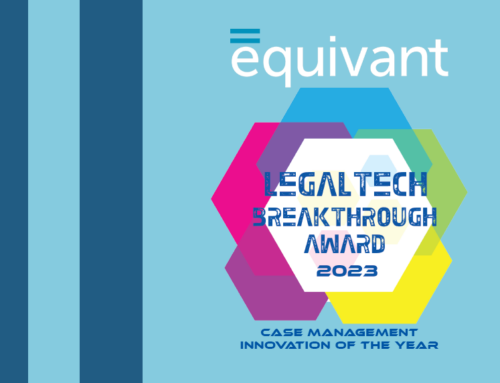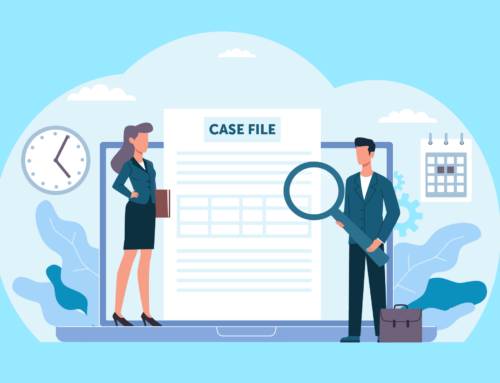Keeping COVID out of Jail: Lessons from a COVID-Free Facility

Interview with Josh Carey, Jail Commander in Hamilton County, Indiana
In this series, Greg Eash, a 25-year veteran correctional officer specializing in classification and inmate behavior management, sits down with corrections experts who are making a difference in their communities to learn about their successes, challenges, and what’s next for their jail.
Greg: Jails throughout the country have been faced with an enormous challenge over the last couple months. Some of them are out ahead of the curve; some of them are struggling. We have been reaching out to our partners and asking what they’ve done to help others get access to resources and to get their guidance on how to deal with this COVID situation.
Today, I’m here with Josh Carey, Jail Commander for the Hamilton County Sheriff’s Department in Hamilton County, Indiana. Josh is a 24-year veteran, and he has been leading his team through this crisis.
Josh: COVID-19 drastically changed how to run a facility with something that you cannot see. In corrections, we’re used to knowing where our threat is and how to deal with the threat, and with this virus, it’s so invisible. We definitely had to change how we think about running a facility, programming, new arrests, transportation—it’s been quite challenging. But I think here at Hamilton County, we have good staff. We have great people that do great things. That’s been able to allow us to be very fortunate with zero positive inmate cases. So that, we’re proud of.
Greg: That’s pretty impressive, because you would be the first jail I’ve talked to that had zero. That’s good. So go back to maybe the first week of March, where we started to really hear about this virus. When did you as the Commander start making some decisions to change or put in some preventative measures to protect not only the inmates, but your staff as well?
Josh: It was roughly around March 14 when we started going ahead and buying a bunch of PPE. Our masks, our gloves, our hand sanitizer. We knew that the shortage was going to be coming, so we tried to order more than enough to get us through this event.
March 20 is when we decided to lock the facility down. At that time, we started our screening, following CDC guidelines. Temperature checks, and any signs from staff that they were not feeling well, they were sent home immediately for seven days and were tested for COVID. If they did not develop any signs and symptoms during that seven days and their test came back negative, they were allowed to return to work. But also early on in the process of COVID, we knew that it was an airborne virus. So, masks were immediately issued. Every staff member was told to wear a mask. Social distancing in a jail is a little more difficult, but if there were no inmates around, staff was allowed to take their mask off as long as they maintained that social distancing.
We started cleaning the entire facility twice a day. Everywhere. Four times a day, we went around, sprayed down all the door handles, intercoms, tables, anything that was touched multiple times throughout the day to try to prevent any type of virus. We worked very closely with our courts and with our fellow law enforcement agencies within the county to try to deter non-violent arrests, people that did not necessarily need to come to jail, so that way we could control the potential virus.
We worked really close with one another. The jail has a lot to do with making sure everybody stays safe, but we don’t have a lot to do with who comes to our facility. If it wasn’t for the other community leaders out there assisting us, I don’t know if we could have been as successful as we have been today.
Greg: When you started issuing masks, did you give masks to all the inmates as well, or just to staff?
Josh: Early on, every new arrest that came in was issued a mask while they were in book-in. We developed what’s called a two-tier quarantine system. All new arrests never came in contact with any other arrest while they were in the holding tank. Then they were all moved to one cell block in a quarantine cell block, that would hold potentially 48 inmates. We divided that block into classification levels, and within those classification levels, we also divided it into day one through five, six through 10, and 10 through 15. So, if you were in our quarantine block for 15 days, never developed any symptoms, we moved you into what we call a tier two quarantine cell block.
Now, they go into tier two, and they stay in there for a period of 30 days, but they’re allowed to comingle with everybody else in the cell block. After 45 days with no signs or symptoms of COVID, that’s when we would move them into the general population. That way, we knew everybody currently within our facility, and it’d be very rare for them to catch COVID from anybody coming from the streets. Our tier one quarantine was checked daily by medical for temperatures. Tier two were checked every evening during medication pass. We continued to monitor those individuals to make sure that no signs and symptoms of COVID developed in a 45-day period before we would place them in general population.
Our GP inmates never moved out of that housing unit. If we transferred anybody to a classroom or to video court, we did it by cell blocks only and then when they returned to their cell blocks, they were given hand sanitizer to make sure their hands were clean, then that classroom was cleaned prior to the new group moving into it. So, we have a lot of cleaning that goes on. Again, the virus, you can’t see it. So, the only way to secure everybody’s safety is to sanitize prior to allowing a new group going in there so we don’t have any cross-contaminations.
We’re still running the tier one/tier two quarantines right now. I expect to run that probably until January 1 of 2021. Temperature checks will also probably continue until January 2021.
Greg: Are you screening staff on the way in the door as well?
Josh: Yes. Every day, a staff member is screened before arriving to work. We’ve had two positive cases of COVID for staff. They self-reported that they believed they were infected before coming to work. We immediately sent them for testing. They tested positive, so now they have to be off for a period of 14 days, and prior to coming back to work, they’re required to have a double negative test.
Greg: Did you put in any kind of stipulations for staff? I ask that because one of the other jails I spoke to had 40 staff test positive. Did you put anything in place or do extra training or communication for staff to try to help them stay safe and stay away from each other?
Josh: Yeah. Constant education and communication with staff I think is extremely important. As a leader, you need to be on the front lines as well, that face-to-face interaction, talking through the pandemic. Obviously, I’m just as unaware as the rest of them. But we knew we needed to wear a mask, we needed to wash our hands. We reached out to some of these bottle distilleries and asked for donations of hand sanitizer so we could give every staff member a bottle of hand sanitizer that they could keep in their car to help protect them when they’re out grocery shopping.
There was no direct order saying that you can’t or can do this. It was just the sincerity of our leadership here, caring about staff and their family members, and just educating them on what we should do so we can stay safe. I contribute a lot of things to the professionalism within this building for the reason why we’ve been able to keep very limited cases of staff members as well.
Greg: In your decision on when to lift the restrictions and let people return to whatever normal is going to be, are you following what the state is doing? Or are you following the CDC guidelines? How are you making those calls?
Josh: That’s a good question. I think I have to listen to everything that’s provided out there. We take some extra measures that may not be as necessary, but we’ve also seen how fast it can spread in a facility, and how out of control it can get, and we don’t want to get to that point.
Greg: Do you have any plans for long-range restrictions or long-range changes that you’re going to keep in place?
Josh: Long term, I have no plans on changing our cleaning regimen, on intermingling populations right now. I don’t see us letting our guard down on this virus until we know it’s out of the way. So, we’re going to continue the steps that we’re taking to ensure that everybody’s safe.
Greg: How did you talk about all of this to your inmate population?
Josh: You’ve got to go down to your population and you just got to have a very open conversation. They have a lot of questions, they have a lot of concerns, and so you try to stress the importance of washing hands, cleaning. We got to think a little bit differently here, because we’re in the same boat as you. We can’t see it coming. We don’t know when it’s going to happen, but we can do things to mitigate and slow those down. So, with signing, education, and having those conversations to help calm the population, I think that has helped. Communication is definitely the key to success, you know?
Greg Eash has worked in law enforcement and corrections for over 25 years. After graduating from Vincennes University with a degree in Law Enforcement, Greg worked as a patrolman for a year before joining the Elkhart County Sheriff’s Office in Elkhart, Indiana, in 1995. He attended the Indiana Law Enforcement Jail Academy and steadily rose through the ranks throughout his career, most recently serving as Jail Warden. Greg specializes in classification and inmate disciplinary processes, and he is currently the operations manager over the Supervision & Custody division at equivant.
Contact Greg or get in touch with the equivant team for technology and classification tools that help jails work smarter.





